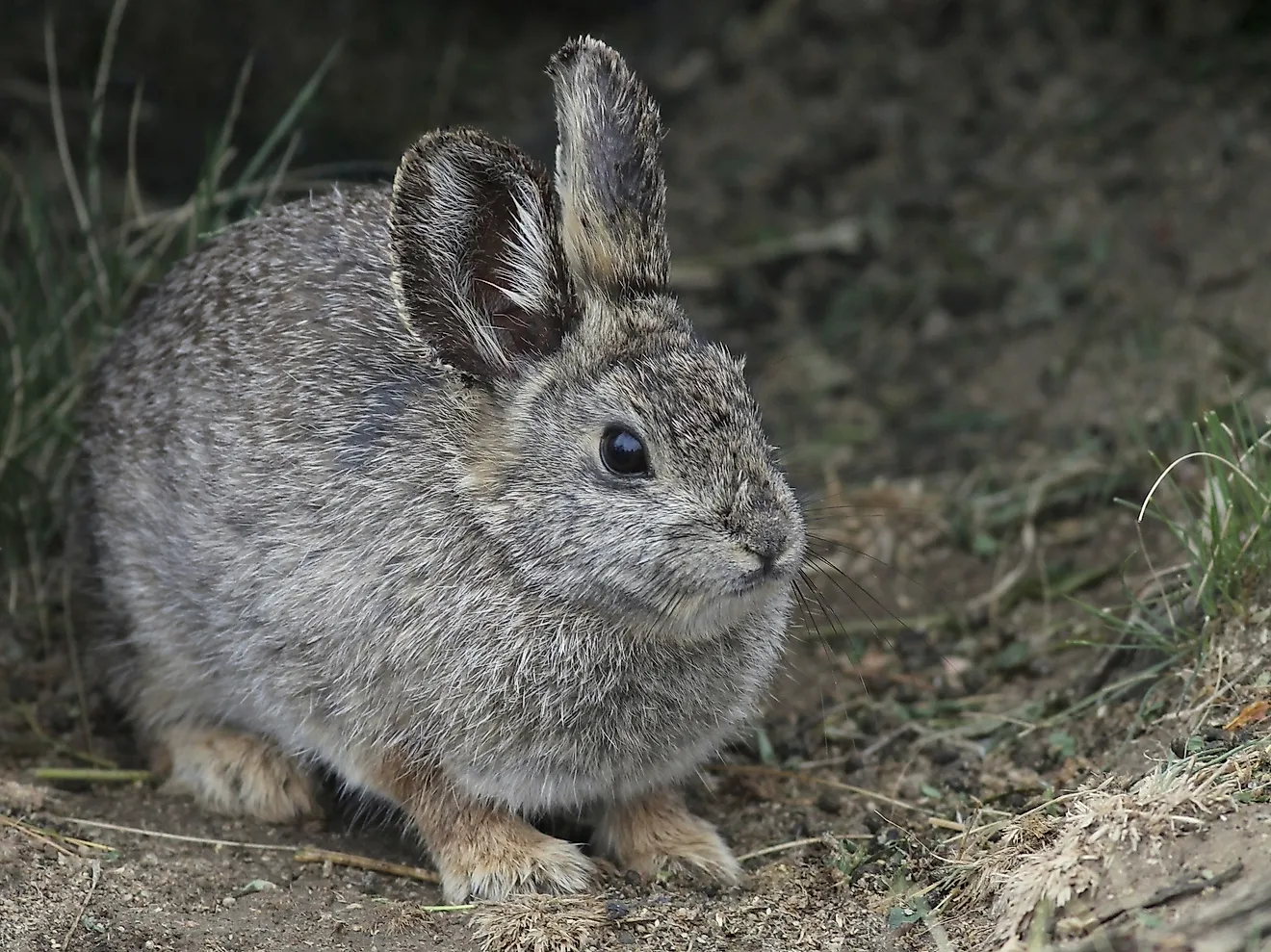Pygmy Rabbit Facts: Animals of North America

5. Physical Description
The pygmy rabbits (Brachylagus idahoensis) are the smallest rabbits to be found in North America, with sizes ranging between 23.5 and 29.5 centimeters (9.2-11.6 inches) in length, and weights between 398 and 462 grams (0.88-1.02 pounds). The adult females of this species are generally larger than the males. These rabbits are often confused with juvenile cottontails since both share a similar appearance. However, the uniformly brown tail of the Pygmy rabbits, lacking white fur, helps to distinguish them from similar looking species in their habitat. Since their small tails blend completely with their body shades, these rabbits often appear tailless. A pale, buff-colored marking on the ears of these pygmy rabbits are also among the unique identifying features of these animals.
4. Diet
Even though sagebrush is considered to contain plant chemicals that might be toxic, and only a few animals dare to feed on it, the pygmy rabbit almost completely depends on it for its food source. 99% of its diet in winter and 50% of the diet in summer comprises of sagebrush. During winter, when snow covers much of the land and enveloping the sagebrush in its white cover, the pygmy rabbits dig tunnels beneath the snow to access their preferred food source. These tunnels often extend the distances between separate sagebrush growths.
3. Habitat and Range
Since sagebrush makes up most of their diets, Pygmy rabbits inhabit areas with dense sagebrush growths. Besides the Volcano rabbit of Mexico, the pygmy rabbit is the only other species of Leporids in North America that digs its own burrow for a domicile. These tiny animals need loose, deep soil to dig their burrows well into the ground. On some occasions, they might use the previously dug burrows of animals who have abandoned them. These rabbits thrive in the sagebrush steppe ecosystems of the Western United States, including the Great Basin and its adjacent mountain ranges. The major threat to these animals is their dependence on sagebrush for their survival. Clearance of sagebrush growths for agricultural purpose and other exploitative human activities, as well as wildfires and over-grazing by domesticated livestock species, all threaten to decimate the habitats and food sources of the Pygmy rabbits.
2. Behavior
Pygmy rabbits are usually most active during dawn and at dusk. This behavior pattern is likely to be an adaptation to survive predation, since predators are least likely to be active during such periods of the day. During winter months, the rabbits are more active at dusk than at dawn. Since these animals dig burrows, they engage in both surface and underground activities. During winter, the movement of the pygmy rabbits over the ground is primarily restricted to traveling with the snow tunnels dug by them. The underground activities of these rabbits are difficult to observe, and as such are yet to be thoroughly investigated.
1. Reproduction
The pygmy rabbits start mating at an age of about one-year-old. Their breeding season lasts for a very short time, for a period of only 2 to 3 months during spring or early summer. The gestation period of these rabbits is yet to be clearly defined by researchers. Scientific reports claim that, in Idaho, a maximum of three litters are born per year, with six young ones usually being produced from each litter. There are no significant reports of litters born during the fall of the year. Juveniles are highly susceptible to mortality from the time of birth until they reach five weeks of age. Meanwhile, mortality rates among adult pygmy rabbits are highest in winter and early spring.











